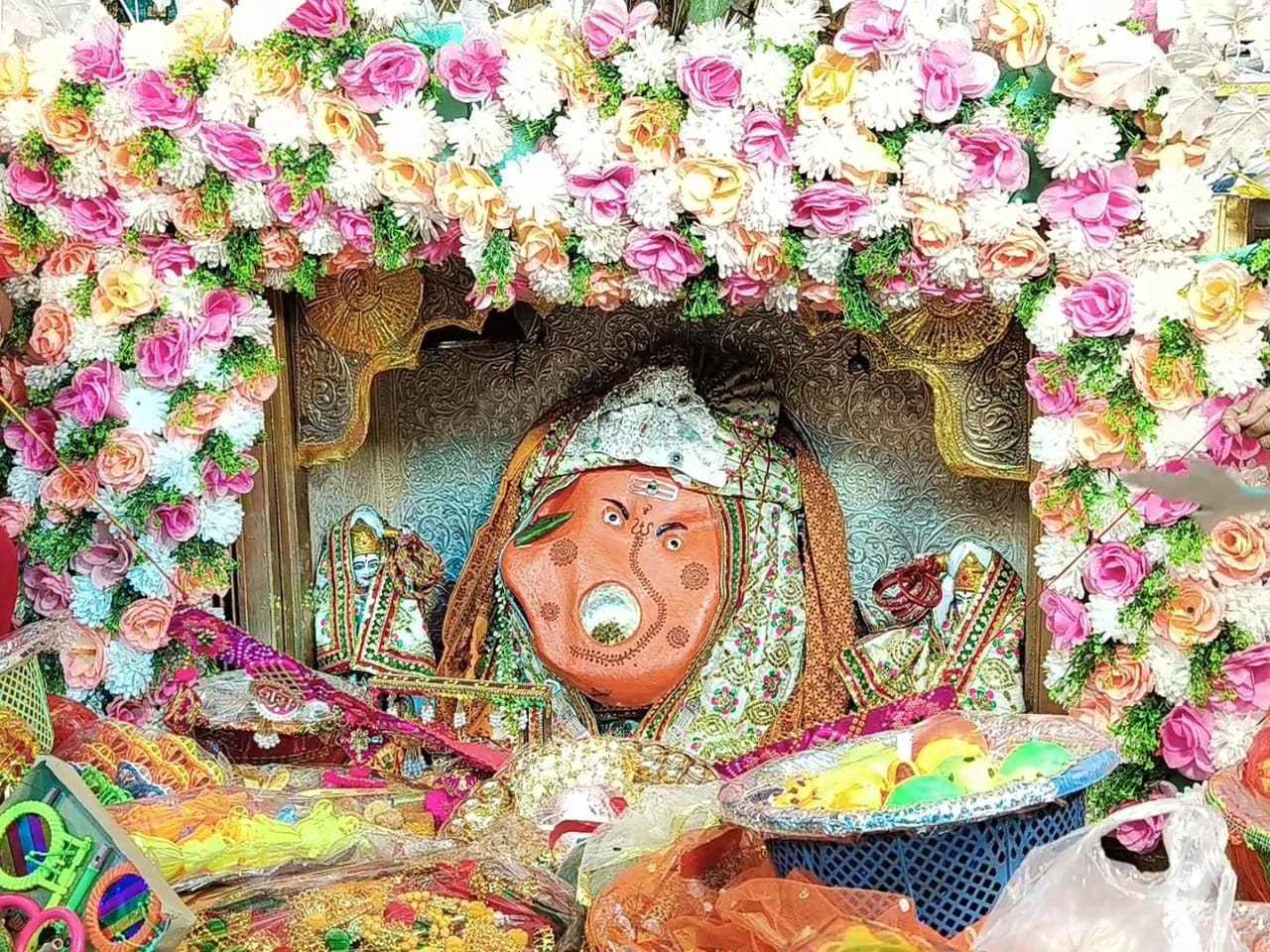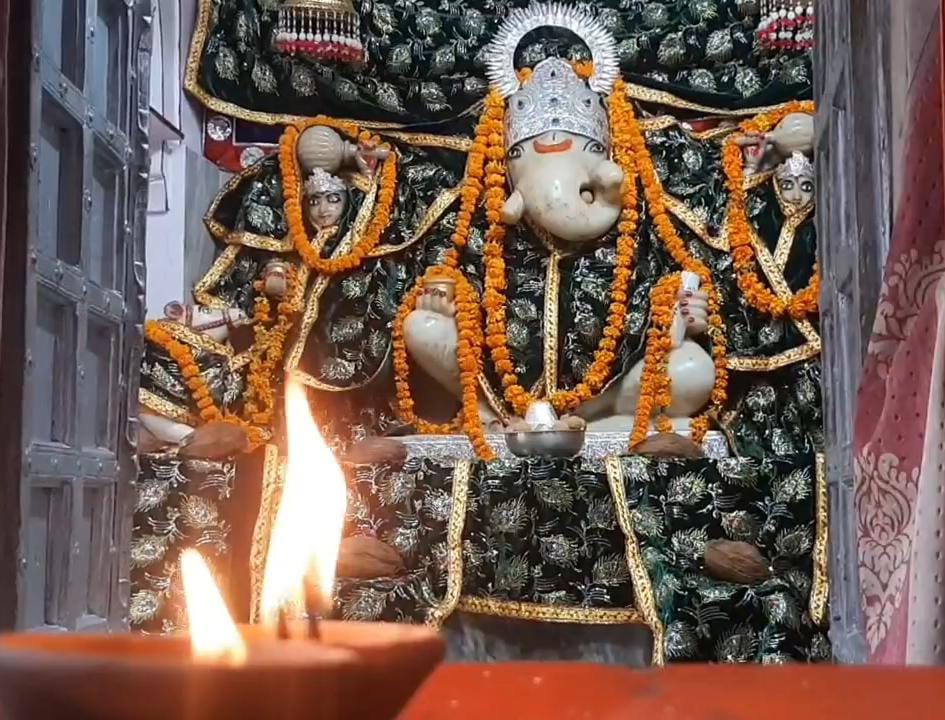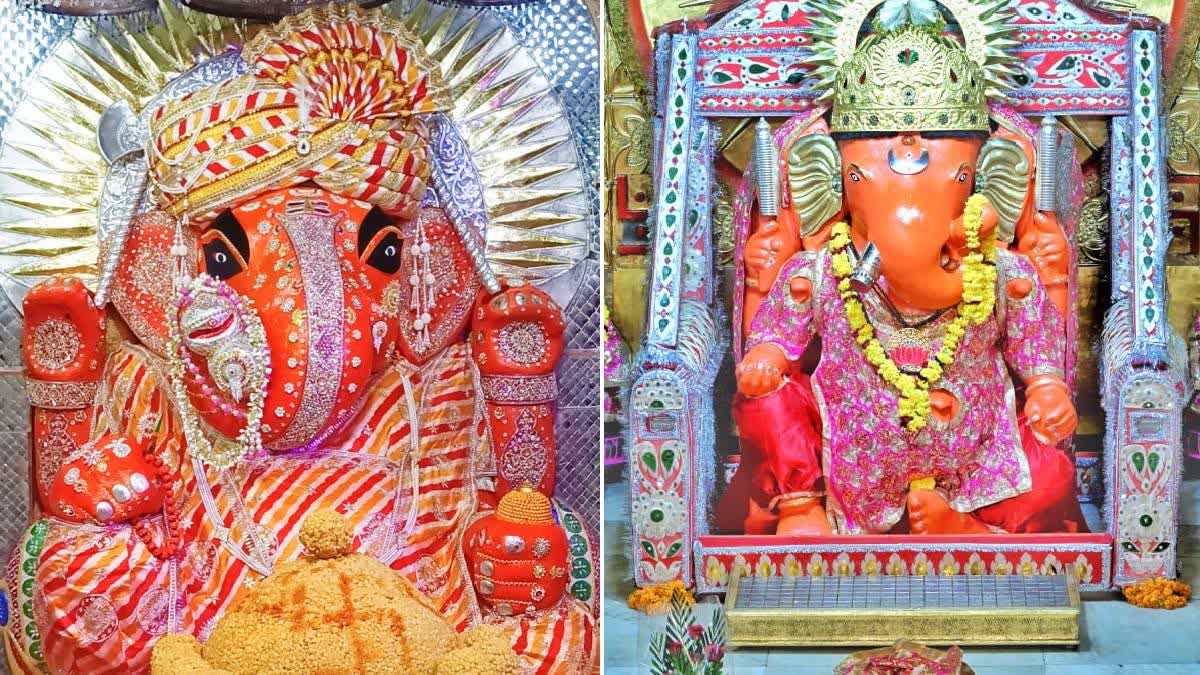Jaipur: On the occasion of Ganesh Chaturthi, a huge crowd has gathered at the Garh Ganesh Temple in Jaipur's Nahargarh Hills where the Ganesh idol is without a trunk and worshipped in the form of a child known as Purushakriti. It is believed that Lord Ganesh has been monitoring Jaipur from the hilltop ever since the city was constructed.

Here, we have Siddhivinayak with snake-bandhej on whose feet the first ray of the sun falls and Moti Dungri Ganesh sits at the foothills of Moti Dungri (Shankargarhi), which are the main Ganesh temples of Jaipur. These temples witness a rush of devotees every Wednesday apart from Ganesh Chaturthi, when devotees flock here to get their wishes fulfilled.
Moti Dungri Ganesh Temple: There are thousands of Ganesh temples across the country, but Moti Dungri Ganesh temple is listed among the famous ones. This temple was established in 1761, some time after the establishment of Jaipur. The idol was brought here from Gujarat's Mavali, which was the maternal home of the then Maharaja Madho Singh-I's queen.
The idol, brought by Jaipur's Nagar Seth Paliwal, was consecrated under his supervision. It is said that the Ganesh idol here is over 500 years old. According to the belief, this idol of Bhagwani Ganesh was being brought in a bullock cart when it stopped automatically below Shankargarhi. It was decided to build the temple where the bullock cart had stopped.
Garh Ganesh Temple: Jaipur's founder Maharaja Sawai Jai Singh had got the idol of Ganesh in its child form consecrated in the Garh Ganesh temple by performing Ashwamedha Yagya. The foundation of Jaipur was laid only after this ritual Standing near the Garh Ganesh temple, one can witness a panoramic view of almost the entire Jaipur.

The head priest of the temple, Pradeep Audhichya, said that the king used to begin his day by seeing the Lord through a telescope from the Indra Mahal of the City Palace. To reach this temple, one staircase was built every day. In this way, the construction continued for an entire year and 365 stairs were built. During the temple's construction, Sawai Jai Singh also took care of the vastu and the city's settlement was also planned on the basis of vastu.
Parkota's Ganesh: During the construction of Jaipur, an idol of Ganesh had appeared outside Chandpole Gate of Parkota heritage wall, which bagged a global recognition from UNESCO, and a temple was set up here. Prayers were offered at this temple for the development and wellfare of Jaipur. Since the day Jaipur was established, the idol has remained a centre of faith among the residents.
Pandit Amit Sharma of the temple said the idol, about 300 years old, had appeared during the construction of the Parkota. This is a natural and miraculous idol which has never been installed by anyone. Its worship began for the development of Jaipur and gradually the faith in Lord Ganesh kept increasing.
Nahar Ke Ganesh: Nearly 150-year-old 'Nahar Ke Ganesh' Temple is present at the foot of Nahargarh Hills. Here, the idol of Ganesh was consecrated by Vyas Ram Chandra Rigvedi with the ashes of the yagya performed by Brahmachari Baba who practiced 'tantra'. His fifth generation is still worshipping here. The unique thing about the Ganesh idol is that its trunk is on the right side and faces the south. The temple priest Jai Kumar Sharma said that Lord Ganesh with its trunk facing south is considered 'Siddhivinayak' and since this idol was prepared from ashes, the Lord is anointed with 'Durva' here. During the monsoons, water used to flow down from the hills and a canal used to run here for months. Due to this canal, the abode of Lord Ganesh is called 'Nahar Ke Ganesh Ji', Sharma said.

White Siddhivinayak Temple: The first ray of the sun in Jaipur performs 'Abhishek' at the feet of Lord Ganesh in the White Siddhivinayak Temple. The Ganesh idol was established here as per tantric rituals and is bound by five snakes. Here, Lord Ganesh has snake-shaped Manibandh on all four arms and anklets on its feet. The idol wears a sacred thread made of a snake.
According to information received from the temple management, Lord Ganesh and Riddhi-Siddhi (Ganesh's wives meaning wealth and success) have gold urns in their hands. This is the only temple in the state where devotees perform milk Abhishek of Lord Ganesh with their own hands. About 27 years ago, on the call of tantric Chandraswami, a crowd of people had gathered here to offer milk to Lord Ganesh and they were seen waiting for their turn till late at night.
Read more



